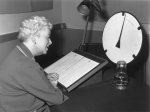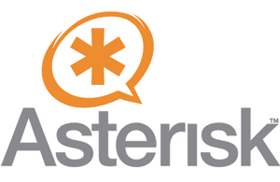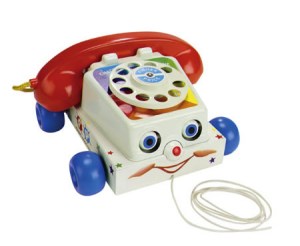 There were early signs — from a young age — that I was going to be a voice-over geek. When most kids were lip-synching into a hairbrush to songs in their bedroom, I, too, was using my brush as a mic — to practice long-form documentary narration. As the closing credits for episodes of The Electric Company scrolled by — the cue for most kids to scramble to the kitchen to find something sugary — I hung around, and read aloud to the sponsorship credits, which went something like: “Funding for the Electric Company is made possible by a grant from the Corporation for Public Broadcasting and the Ford Foundation, and by a grant from the Carnegie Corporation of New York …” I considered it a personal feat to match the pitch, rhythm and the cadence of the announcer — and *then* went to find something sugary.
There were early signs — from a young age — that I was going to be a voice-over geek. When most kids were lip-synching into a hairbrush to songs in their bedroom, I, too, was using my brush as a mic — to practice long-form documentary narration. As the closing credits for episodes of The Electric Company scrolled by — the cue for most kids to scramble to the kitchen to find something sugary — I hung around, and read aloud to the sponsorship credits, which went something like: “Funding for the Electric Company is made possible by a grant from the Corporation for Public Broadcasting and the Ford Foundation, and by a grant from the Carnegie Corporation of New York …” I considered it a personal feat to match the pitch, rhythm and the cadence of the announcer — and *then* went to find something sugary.
I also had an early fascination with telephone voices, which led to me calling the “Time and Temperature Lady” several times a day. It didn’t even occur to me that what she did could be a viable career — I just loved the idea of someone keeping an eye on the time for me, and cheerfully telling me exactly what that time it was, no matter when, or how often I called in.
She’s called Neiti Aika in Finland; Fröken Tid in Sweden, and Froken Ur in Norway (literally: “Miss Time”) Horologe Parlante in France; Zeitansage in Germany, Klukkan in Iceland, Tante Cor (“Aunt Cor”) in the Netherlands, and Zegarynka in Poland. The need for an automated “timepiece” — who also sometimes dispensed current weather updates — knew no international boundaries, and filled a critical requirement for (by that time’s standards) instant and up-to-date information.
Early speaking clocks used rotating glass discs on which different “parts of time” were recorded on the disc. A synchronous motor drove the disc with a power source derived from a 5 mhz quartz oscillator. An actual hand wheel was used to spin the motor on start-up. This was pretty much the status quo until digital systems became prevalent in the early 80’s. They used a built-in crystal oscillator and microprocessor logic control, with solid-state microchips — and no moving parts at all; thought be accurate to five thousandths of second.
The early time/temperature companies in the US — the first being Audichron; the second being a close competitor, Weatherchron, were known to prefix the time/weather postings with plugs for the phone companies who incorporated them into their systems — one could hear messages such as “A long-distance call is a smiling happy way to visit. Ohio Bell time is…” or “Give people a chance to answer; let the phone ring ten times..” Many of the early prompts were voiced by the legendary Jane Barbe (whom I’ve written about previously in the blog: http://bit.ly/edizit) as well as John Doyle and Joanne Daniels.
With the prevalence of computers, initially, and now the hand-held devices which are a permanent part of our lives (and which give us instant, real-time access to critical information), the need to go through “complicated” measures (such as dialing a phone) just to access the accurate time or the latest ever-changing incarnation of the weather forecast, is yet another aspect of telephony I seem to be blogging more and more about — an aspect which is going the way of the dinosaur.
Give the Brits credit for being old-school — to this day, the BT Speaking Clock receives around 60 million calls a year. The US seems to be slightly less sentimental: in September 2007, AT & T discontinued its California service, and droves of states in the US followed suit: the time/temperature services have been phased out as a telephone company adjunct product in every state but Nevada — national time recordings are still available, provided by shortwave radio time signals WWV and WWVH, and in addition, the United States Naval Observatory operates two speaking clocks, in Washington DC, and in Colorado Springs, CO — as well as Microsoft TellMe providing a voice portal designed to dispense time/temp data. In Canada, The National Research Council still maintains a telephone portal to dispense info from their primary cesium atomic clock — but only gives readings for the Ottawa/Gatineau area.
Our need to know — our compulsion to stay connected, up-to-date, and current — has only blossomed over time and with every device we incorporate into our lives which trump the last one in its edginess and innovation. I still calibrate my wristwatch every morning with an excruciatingly exact online clock; my urge to study upcoming weather patterns has done anything but abated. I just no longer have access to a cheery “person” re-setting and re-positioning me in the time continuum — another quaint hallmark of telephony which has sadly atrophied and become obsolete.
Next blog, I’ll be writing about the famous “Voices Behind the Consoles” — in TV and Movies, there’s occasionally an unseen character, made all the more compelling by the fact that they *are* just a voice….thanks for reading! Your comments are always welcome!
Allison Smith is a professional telephone voice, who can be heard voicing systems for telephone systems and private companies throughout the world, including platforms for Verizon, Qwest, Cingular, Sprint, Bell Canada, Hawai’ian Telcom, and Asterisk. Her website is www.theivrvoice.com.














